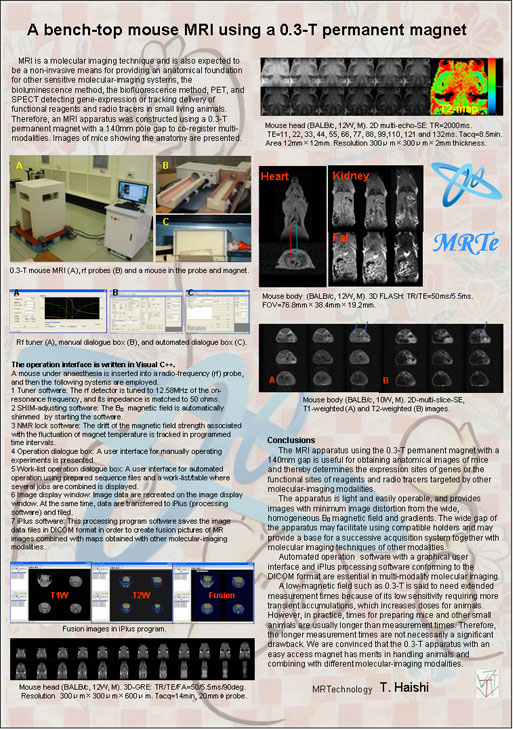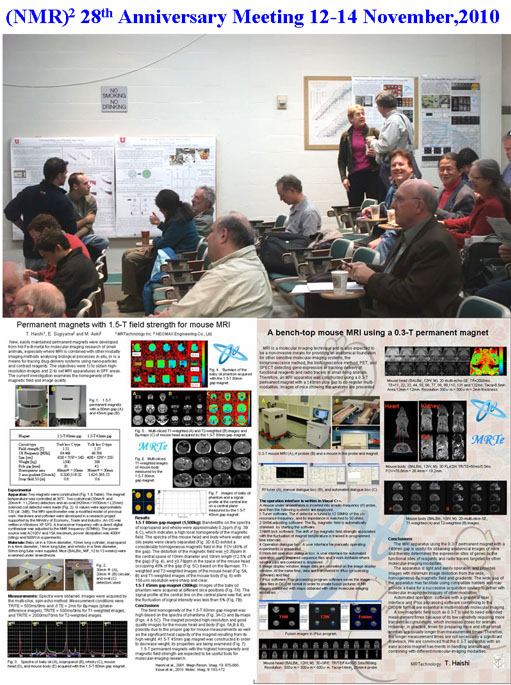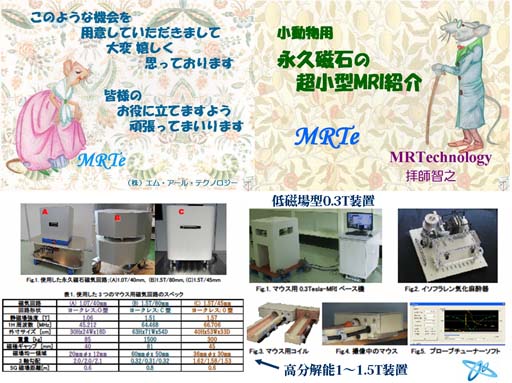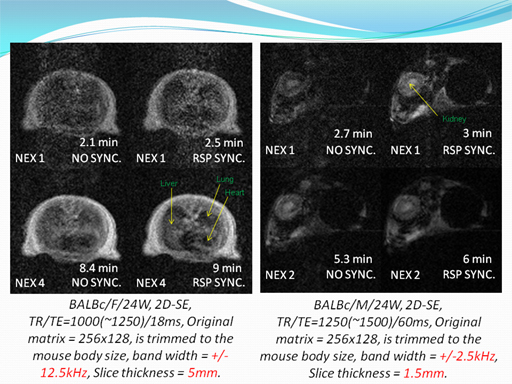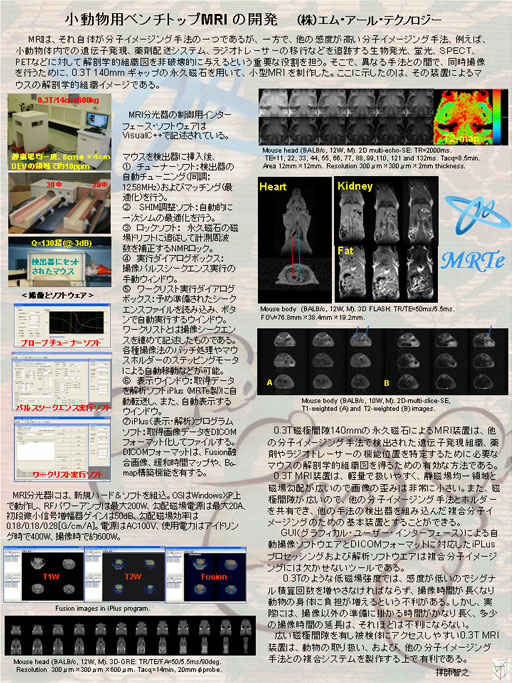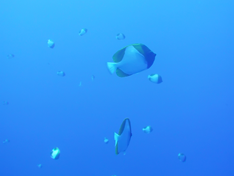Visit; 28th anniversary NMR**2 meeting in UNM, Albuquerque, New Mexico
Update : 2010.12.01 (23:37:05)
Posted : 2010.11.22 (03:43:09)
Written; 2010-11-22, 03:26:53
The 28th anniversary? NMR**2 was a fun meeting as Prof. Eiichi Fukushima of ABQMR (one of the main organisers for this meeting) stated, and was indeed impressive because giant researchers attended. MRTe presented two posters for mouse MRI systems using 0.3 and 1.5-Tesla permanent magnets. The former was developed for visualizing anatomical foundation of the small animals in co-registered multi-modality molecular imaging, and the latter was to locate paramagnetic reagents functioning in specific tissues and organs of the animals.
I attended to all lectures of professors, Jim Satterlee, Al Garroway, Bernhard Blumich, Larry Werbelow, and Bob London about theoretical, historical, and latest stories of NMR and MRI. Especially, I was very interested in a small magnet (100mm diameter x 200mm long) of ACT Inc., presented in the lecture of “NMR without Superconducting Magnets” by Prof. B. Blumich, (Eiichi introduced him as a leader in the mobile NMR world), which was deeply concerned with our works. Afterwards, in front of our posters, I discussed with him about spectra of phantoms and mice, and about B0 shimming of permanent magnets; Designs of magnets were continuously renewed day by day or made a change according to subjects; our 1.5-T magnets presented in the poster were recently developed and had the most homogenous magnetic fields ever made (homogeneity in B0 field was announced elsewhere too by NEOMAX Engineering Co., Ltd.); and it was difficult to reply to his question if the B0 high filed can be shimmed using only iron pellets.
I also discussed with a researcher about a tree-MRI, in the case with a C-shaped open access permanent magnet and rf coil as well, that belonged to one of the oldest research subjects of MRTe and was still continued. Many people asked me if the magnet’s temperature was controlled or not. In practise, the precise control of magnet temperature seemed essential to obtain good image quality. Dr. Jim Carolan known as the first constructor of Bruker’s superconducting magnet and Dr. Athol Gibson, a constructor of spectrometer, were gazing upon our mice images, I thought because the progress of permanent magnets exceeded their expectation.
Eiichi gave me an oppoutunity for sponsor-talk as same as the other sponsors attended. I told the attendee that “the quality of MRI with the latest permanent magnets has achieved great improvements as shown in my posters, they are light weight, safe and stable, and makes good images. Thus it will soon become primary tools for molecular imaging or anatomical studies of small animals in SPF areas”.
Finally, thank you Dr. Steve Altobelli, president of New Mexico Resonance for his kind help during the meeting.
T. Haishi, Ph.D.



